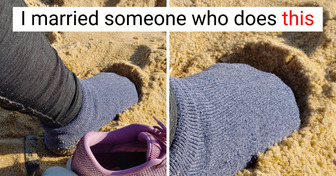15 Mysterious Findings That Are Beyond Weird

The way in which societies have evolved over time is something that simply fascinates us. All the objects we use in our day-to-day lives have a bit of history — even the pencil you’re holding has interesting origins. Keep reading to discover some facts behind common things.
In your meals, something that surely cannot be missing is salt. Most commonly used to enhance the flavor of food, you wouldn’t expect salt to ever be considered currency. The ancient Romans used salt as money to pay their soldiers in salt rations. And, in fact, the English word “salary” comes from this.
For some of us, wearing glasses is vital. We can’t imagine going to the office or reading a book at night without them. And if you’ve ever wondered when the first wearable glasses were invented, we have the answer. They can be traced back to Italy around 1284.
The first wearable eyeglasses were simply made of glass lenses mounted in heavy frames that were either hand-held or worn on the nose. The materials used for the frames were organic materials, such as wood, copper, leather, and bone.
Great inventions sometimes have slightly more humble beginnings. In recent years, streaming services have gained popularity, along with programs that help us communicate with anyone across the globe. But it may surprise you to learn that webcam technology was developed for the purpose of keeping an eye on a coffee pot.
Going back to 1993, Cambridge researchers hated to get up from their chairs to check the coffeepot, only to find it empty. So they hooked up a system that would transmit images from the room where the pot was kept. By the end of the year, the digital streaming system hit the new world wide web, and the coffeepot became famous.
After the discovery of America, European explorers were fascinated with the properties of cocoa and how the Aztecs used it in different ways. When it arrived in Western Europe, European doctors began to prescribe chocolate for different types of ailments, from fevers to indigestion to nervous system diseases. Some doctors even prescribed it as a treatment for hypochondria.
There is nothing quite like receiving a package wrapped in bubble wrap. Popping those bubbles can be so stress-relieving that we often wish the bubble wrap would go on forever. Now imagine that it was first invented to be textured wallpaper.
When it didn’t become a hit with consumers in 1957, it was intended to be sold as greenhouse insulation. But it wasn’t until IBM needed something to protect shipments of its new 1401 Data Processing System in 1960 that the bubble wrap really took off and turned into what we know it as today.
Although the name “mouse” is quite popular, the first versions of the computer mouse were once called bugs. It wasn’t until the “tail” shaped cable came around that it became known as what it is today.
When you think of a pencil, chances are the first thing that comes to mind is a yellow pencil. If you have ever wondered why pencils are yellow, here is the answer. In the late 1800s, when people began painting pencils, the world’s finest graphite came from China. Yellow, the color of royalty, was a way of indicating that the pencil was made of superior Chinese graphite.
Surprisingly, peanuts aren’t technically nuts, but legumes, although “nut” is in its name. Like soybeans, lentils, and other legumes, peanuts are edible seeds that grow in pods. That means walnuts, almonds, cashews, and pistachios aren’t nuts either.
Here is an interesting fact for all cuisine lovers. We can all agree that chef hats are our favorite part of a chef’s uniform. But what you may not know is that those chef hats have exactly 100 folds. And there is a reason for this exact number. That number of folds apparently represents the number of ways you can prepare an egg.
Carving pumpkins for the Halloween season is probably one of the most fun things to do in the fall. But it might surprise you that during the nineteenth and early twentieth centuries, people carved turnips, not pumpkins. The tradition began by carving scary expressions on these vegetables and also sometimes on beets and potatoes. We’re happy that this spooky tradition is exclusively performed on pumpkins.
Do you know the history of a common object we use daily that is odd enough to be shared? Let us know in the comments below!











